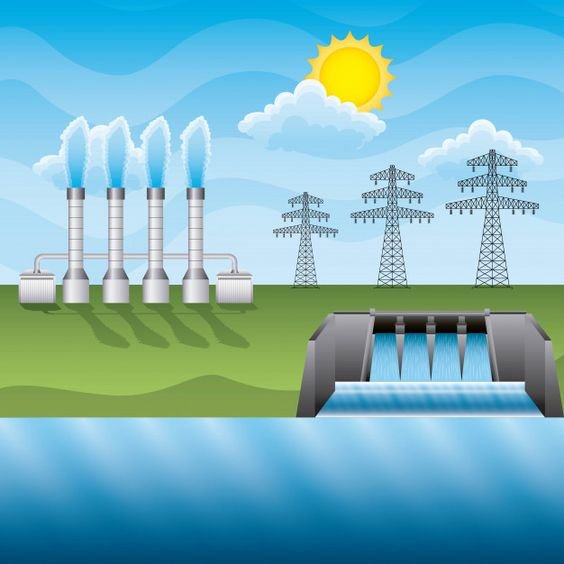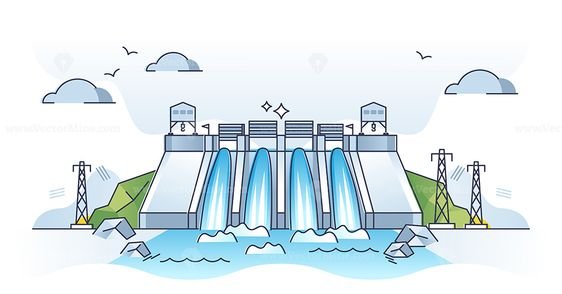An Introduction to Hydro Power Plants Review
Have you ever thrown a pebble into a pond and watched the ripples? Or have we stood by a waterfall, feeling its thunderous power? These are snapshots of a force so potent that, for centuries, we’ve harnessed it to power our civilizations. This is the story of hydropower plants – the epitome of human ingenuity, harnessing the energy of water to light up our world.

What is a Hydro Power Plant?
You’ve seen those massive structures nestled between hills, with glistening water at one side and a river flowing at the other. Ever wondered what they are? Those are Hydro Power Plants Review, where water’s potential energy is harnessed to generate electricity. Pretty cool.
The Evolution of HydroPower Plants
Like maximum technological marvels, hydro energy flora has developed over time. Their records strains returned to historical instances while water wheels have been used to grind grains. However, we realize today that the primary hydroelectric energy plant was installed in 1882 Appleton, Wisconsin, USA. And we see it has performed a pivotal position in powering up our world.
Key Components of a Hydro Power Plant
Every hydro energy plant includes 3 essential components.
-
The Dam and Reservoir
Imagine a massive wall preserving tens of thousands of gallons of water. This dam serves purposes – to govern water waft and save water in a reservoir for destiny use. The reservoir is not anything but a huge frame of water with accumulated capability power.
-
The Turbine
This is wherein the magic happens. The pressure of falling water is used to spin the Turbine. It’s like a massive fan, however, in reverse.
-
The Generator
Attached to the Turbine is a generator. As the Turbine spins, so does the Generator, and this movement induces a waft of electrons, developing electricity.

How Does a Hydro Power Plant Work?
Let’s understand the sequence of this fascinating process.
-
The Flow of Water
The water from the reservoir flows towards the Turbine due to the gravitational force. It falls with significant pressure, spinning the turbines.
-
Generating Electricity
This spinning motion of turbines is converted into electrical energy in the Generator. The electricity thus produced is then transmitted to homes, businesses, and industries through power lines Hydro Power Plants Review.
Advantages of Hydro Power Plants
So, what makes hydropower plants special?
-
Renewable Energy Source
Firstly, they utilize water, which is a renewable resource. As long as the rain keeps filling the reservoirs, we won’t run out of this power source.
-
Reliable and Predictable
Hydropower plants can generate electricity continuously and can be ramped up or down depending on the demand, offering a high degree of reliability.

Disadvantages of Hydro Power Plants
However, like all good things, there are some drawbacks.
-
Environmental Impact
Building dams can disrupt natural habitats, affecting local fauna and flora. Also, reservoirs can lead to methane emission, a potent greenhouse gas.
-
High Initial Costs
The initial investment for constructing a hydropower plant can be significantly high, often making it economically challenging.
The Future of Hydro Power Plants
Looking ahead, the possibilities of hydropower plant life are promising.
-
Technological Innovations
With technological advancements, we can anticipate greater green turbines, mitigating environmental impact, and maximizing Hydro Power Plants Review output.
-
Policy and Regulatory Changes
As governments internationally apprehend the significance of renewable power, rules favoring Hydro Power Plants Review improvement are rising.
Conclusion
Hydro Power Plants Review life constitutes an indispensable part of our quest for a sustainable and renewable future. Their functionality to offer a reliable, smooth power supply outweighs the drawbacks, making them an important asset in our combat in opposition to weather change Hydro Power Plants Review.
FAQs
Can hydropower plants operate at all times?
If sufficient water is in the reservoir, hydropower plants can operate continuously.
What is the lifespan of a hydropower plant?
A well-maintained hydropower plant can last for more than 50 years.
How much electricity can a hydropower plant generate?
The amount of electricity generated depends on the volume of water and the height from which it falls. Larger plants can generate several thousand megawatts of electricity.
Can a hydropower plant be built anywhere?
No, they require a suitable location with a significant water source and appropriate height for water to fall.





